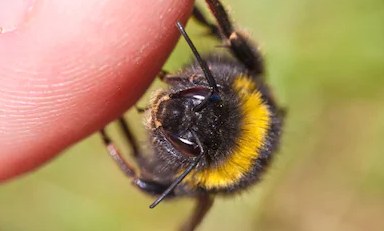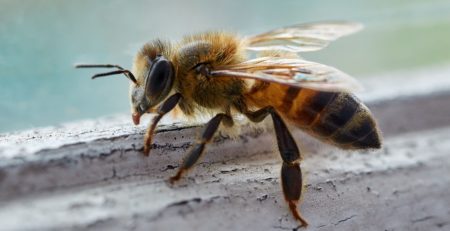Different Types of Bees
According to Orange County bee removal experts, the most common bees that you will find near a residential area are bumblebees, honey bees, and carpenter bees. While they may all look similar to an untrained eye, these bees exhibit very different skills and natural habits. In order to properly secure a home from a bee infestation, it is important to be able to identify the type of bee that is causing the problem. Bee removal experts are here to explain the ways in which these commonly found bees are different from one another and what they require for successful removal.

Bumblebees
Known scientifically as the Bombus pensylvanicus, the American bumblebee looks very much like the carpenter bee. Both are about a half-inch to an inch long with black wings and up to three yellow stripes on their bodies. However, bumblebees are much fuzzier. The fuzz on their bodies actually allows them to carry pollen to their hives.
Bumblebees are typically found in parks, fields, and woods. The pollen that they collect is used to make honey for the winter months. However, this honey is different from honey bee honey and cannot be consumed by people.
The hives that bumblebees live in are usually constructed in holes, sheds, or other piles near the ground. However, some will venture into trees or birdhouses as well. These hives are smaller than honey bee hives and will house only around 400 bees (as opposed to the typical 50,000 for honey bees).
Bumblebees, like most other bees, will only sting when they are provoked. However, they are able to sting you multiple times and will still survive after that, unlike honey bees.
Honey bees
Apis mellifera or the western honey bee is much smaller than bumblebees and carpenter bees. Adults can be measured at one-half to five-eighths of an inch. Their hives are usually situated in logs, fence posts, and hollowed-out trees. Bee removal experts in Orange County have also found honey bee hives inside attics, walls, and other crawl spaces inside homes.
When a honey bee feels it is threatened, it will sting in order to release a warning signal for other nearby bees. The stinger will detach from the bee’s body into the victim and it will quickly die after.
Carpenter bees
Carpenter bees, also known as wood bees or Xylocopa, are very similar to bumblebees in appearance. However, they are not quite as fuzzy and the top of their abdomen is black. They also have a black-colored dot on their thorax.
These bees can be found in parks, fields, woods, and home gardens. Usually, carpenter bees will burrow into wood surfaces and build galleries instead of hives. The right spot could be in an eave, attic, rafter, tree, fence post, or telephone pole. They will hibernate in their wood tunnels for the winter months.
Unlike their bee counterparts, male carpenter bees are not able to sting. The females are able to sting but only when they are threatened.
Prevention & Removal
Since all three of these bees have different natural tendencies, they are attracted by different environmental factors. Most bees are attracted to sweet scents and food. However, carpenter bees are especially attracted to unpainted wood surfaces where they can drill holes for their nests.
There are various techniques that bee removal experts will use, depending on the type of bee involved. This is why it is so important to know what kind of infestation you are dealing with. Bee removal professionals have special protective gear and tools that will make the job efficient and successful. If you ever have a problem with an infestation, it is best to call an expert rather than attempting to fix the situation yourself.











